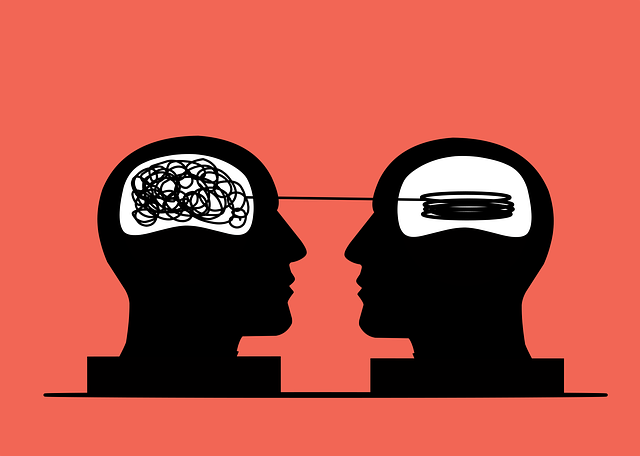Exercise and physical activity are effective therapies for teenage depression, offering a natural alternative to medication. Through neuroplasticity, regular movement stimulates neurotransmitters like serotonin and dopamine, reducing anxiety and depression symptoms. Physical activities also provide stress relief, better sleep, and accomplishment, fostering overall well-being. Engaging in diverse activities like sports, fitness classes, or walking/dancing can enhance body image, self-esteem, and social support, crucial for navigating therapy successfully. Overcoming barriers to physical activity through tailored strategies is key to implementing these therapies effectively.
“Exercise and physical activity emerge as powerful tools in addressing teen mood issues, particularly when it comes to managing symptoms of depression. This article delves into the intricate relationship between movement and adolescent mental health, exploring how various forms of exercise can serve as an effective therapy for teenage depression. From understanding the underlying mechanisms to practical strategies for implementation, we guide parents, educators, and teens in harnessing the therapeutic benefits of physical activity.”
Understanding the Link Between Exercise and Teen Mood
Exercise and physical activity have been shown to be powerful tools in improving teen mood, offering a natural alternative to prescription medication for those dealing with therapy for teenage depression. The link between movement and mental health is rooted in the brain’s neuroplasticity—its ability to form new neural connections and adapt. Regular exercise stimulates the release of neurotransmitters like serotonin and dopamine, often referred to as “feel-good” chemicals, which play a significant role in regulating mood, reducing anxiety, and alleviating symptoms of depression.
Beyond its biological effects, physical activity also provides teens with a healthy outlet for stress relief, promotes better sleep, and fosters a sense of accomplishment, all of which contribute to improved overall well-being. Engaging in sports, fitness classes, or even simple activities like walking or dancing can help teens establish a positive relationship with their bodies, boost self-esteem, and create a supportive social environment—crucial components in navigating therapy for teenage depression effectively.
Types of Physical Activity for Depression Relief
Exercise and physical activity play a pivotal role in managing and improving teen mood, particularly as a therapy for teenage depression. Incorporating various types of movement can significantly boost mental well-being. Aerobic exercises like running, swimming, or cycling increase brain levels of serotonin and endorphins, often referred to as ‘feel-good’ chemicals, which are known to elevate mood and reduce symptoms of depression.
Beyond aerobic activities, strength training and yoga also offer substantial benefits. Resistance exercises have been shown to enhance self-esteem and promote neuroplasticity, the brain’s ability to form new neural connections. Yoga, with its focus on breath control and mindfulness, can calm the mind, reduce stress, and improve overall mood regulation. These diverse physical activities provide teens with a range of options to find what works best for them in their journey towards better mental health.
Implementing Exercise as a Therapy for Teenage Depression
Exercise has emerged as a powerful tool in the arsenal against teenage depression, offering a natural and accessible form of therapy. Physical activity stimulates the release of neurotransmitters like serotonin and dopamine, which are key players in regulating mood and promoting feelings of well-being. Regular exercise can help teens break out of negative thought cycles and provide an outlet for stress and anxiety relief.
Incorporating exercise into routines can be as simple as encouraging teens to engage in activities they enjoy, such as walking, running, dancing, or team sports. Even brief periods of movement throughout the day can have a positive impact on mental health. For some, structured programs like mindfulness-based exercise or cognitive behavioral therapy through physical activity may be beneficial. Such initiatives teach teens how to use exercise as a coping mechanism, enhancing their overall resilience and ability to manage depressive symptoms effectively.
Overcoming Barriers to Regular Physical Activity in Teens
Overcoming barriers to regular physical activity is crucial for implementing effective therapy for teenage depression. Many teens face challenges that deter them from engaging in exercises, such as busy school schedules, lack of interest or motivation, and social pressures. It’s important to recognize these obstacles and tailor strategies accordingly. For instance, encouraging structured breaks during the day for physical activities or incorporating enjoyable sports and games can help overcome time constraints.
Parents, educators, and healthcare providers play a significant role in fostering an active lifestyle by offering support, setting realistic goals, and providing positive reinforcement. They can also collaborate with teens to identify specific types of activities they genuinely enjoy, whether it’s dancing, hiking, or team sports. By addressing these barriers proactively, we can make physical activity more accessible and appealing, thereby enhancing its role as a powerful therapy for teenage depression.
Regular exercise has been proven to be an effective therapy for teenage depression, offering a natural and beneficial way to improve mood and overall mental well-being. By incorporating various physical activities, teens can find relief from symptoms of depression and develop healthy coping mechanisms. Overcoming barriers such as lack of motivation or time constraints is key; however, with consistent effort and support, regular physical activity can significantly enhance the lives of teens struggling with mental health challenges.
